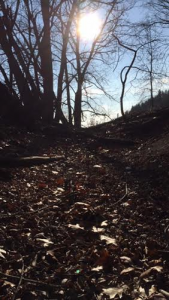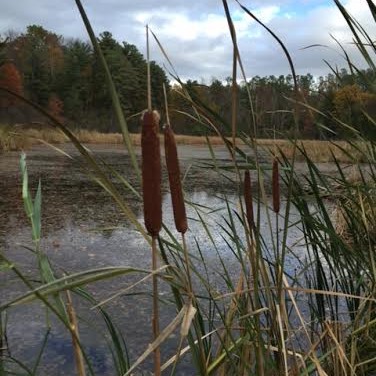The first human interactions with my spot occurred roughly 11,300 years ago, when the Paleoindians moved into the Champlain Basin as the glaciers retreated (LCMM). These early humans were hunter- gatherers, and moved freely around the basin following herds of animals. As the climate warmed and many species of large animals became extinct, these small, migrating groups of Paleoindians began to condense and settle down. This shift occurred roughly 9,000 years ago, and the people of this time most likely relied more heavily on fishing than before (LCMM). Around 2,000 years ago, Native Americans of the Champlain Basin began farming, and slowly developed the “Three Sisters” method that was used when the Europeans arrived. The Three Sisters farming method was a very sustainable farming practice: The corn acted as a bean pole, allowing the beans to reach the sun. The beans naturally fix nitrogen, and would replace the nutrients that the corn and squash took out of the soil, and therefore maintained the soil quality. The squash acted as a climate and weed controller- its large leaves held moisture in the soil and shaded out potential competition.
gatherers, and moved freely around the basin following herds of animals. As the climate warmed and many species of large animals became extinct, these small, migrating groups of Paleoindians began to condense and settle down. This shift occurred roughly 9,000 years ago, and the people of this time most likely relied more heavily on fishing than before (LCMM). Around 2,000 years ago, Native Americans of the Champlain Basin began farming, and slowly developed the “Three Sisters” method that was used when the Europeans arrived. The Three Sisters farming method was a very sustainable farming practice: The corn acted as a bean pole, allowing the beans to reach the sun. The beans naturally fix nitrogen, and would replace the nutrients that the corn and squash took out of the soil, and therefore maintained the soil quality. The squash acted as a climate and weed controller- its large leaves held moisture in the soil and shaded out potential competition.
When the Europeans arrived in the Champlain basin in the 1600’s, they were met by the Abenaki, a Native American tribe that resided in the area. The Europeans began forcing the Abenaki out of the region and clear cut most of the region for farming. The European settlers then set up lumber processing plants, woodworking shops, boatbuilding yards, and machine shops. Tanneries, preservatives, and arsenic also contributed to the pollutant pool (History). The soil and lake became polluted from years of unregulated dumping. The North Beach area evolved from a lumber port, to a railyard, to a petroleum storage facility in the early 1900’s. By the 1970’s, the newfound environmental movement swept through the area, working to clean up the mess created and recreate a healthy natural space for organisms, both human and nonhuman alike to enjoy.
Throughout history, the area containing my phenology spot has endured many different human influences. In the beginning, there was very little impact caused by humans- hunter-gatherers did not even set up permanent settlements on the land and ranged around in small groups. Once they began settling and farming, they still had very minimal influence over the land. All farming, hunting and fishing techniques were refined until they could be carried out in sustainable ways. When the Europeans began settling in the area, these environmentally-friendly methods were discarded, and humans began having extremely harmful effects on the area. Presently, we are still negatively impacting the area, but we are beginning to turn ourselves around and look back to the sustainable ways of the Native Americans.
